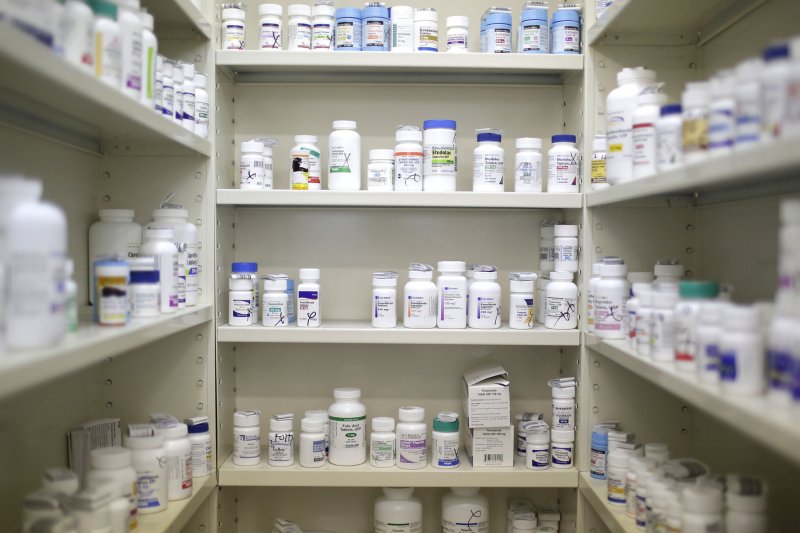Al Jazeera reporter killed during Israeli raid in West Bank
By JOSEPH KRAUSS and FARES AKRAM
An undated photo released by the Al Jazeera network shows Shireen Abu Akleh, a journalist for Al Jazeera network. Abu Akle. the well-known Palestinian reporter for the broadcaster's Arabic language, channel was shot and killed while covering an Israeli raid in the occupied West Bank town of Jenin early Wednesday, May 11, 2022, the Palestinian health ministry said
Journalists and medics wheel the body of Shireen Abu Akleh, a journalist for Al Jazeera network, into the morgue inside the Hospital in the West Bank town of Jenin, Wednesday, May 11, 2022. The well-known Palestinian reporter for the broadcaster's Arabic language channel was shot and killed while covering an Israeli raid in the occupied West Bank town of Jenin early Wednesday, the Palestinian health ministry said.
(AP Photo/Majdi Mohammed)
JERUSALEM (AP) — A journalist for Al Jazeera was shot and killed while covering an Israeli raid in the occupied West Bank town of Jenin early Wednesday. The broadcaster and a reporter who was wounded in the incident blamed Israeli forces, who said they were investigating.
Shireen Abu Akleh, a well-known Palestinian female reporter for the broadcaster’s Arabic language channel, was shot and died soon afterward. Ali Samoudi, another Palestinian journalist, was hospitalized in stable condition after being shot in the back.
The Qatar-based network interrupted its broadcast to announce her death. In a statement flashed on its channel, it called on the international community to “condemn and hold the Israeli occupation forces accountable for deliberately targeting and killing our colleague.”
“We pledge to prosecute the perpetrators legally, no matter how hard they try to cover up their crime, and bring them to justice,” Al Jazeera said in a statement.
The Israeli military said its forces came under attack with heavy gunfire and explosives while operating in Jenin, and that they fired back. The military said it is “investigating the event and looking into the possibility that the journalists were hit by the Palestinian gunmen.”
Israel’s Foreign Minister Yair Lapid said it had proposed to the Palestinian Authority a joint pathological investigation into the reporter’s death. “Journalists must be protected in conflict zones and we all have a responsibility to get to the truth,” he tweeted.
The Palestinian Authority, which administers parts of the occupied West Bank and cooperates with Israel on security matters, condemned what it said was a “shocking crime” committed by Israeli forces.
Abu Akleh, 51, was born in Jerusalem. She began working for Al Jazeera in 1997 and regularly reported on-camera from across the Palestinian territories. In video footage of the incident, Abu Akleh can be seen wearing a blue flak jacket clearly marked with the word “PRESS.”
Samoudi, who was working as her producer, told The Associated Press they were among a group of seven reporters who went to cover the raid early Wednesday. He said they were all wearing protective gear that clearly marked them as reporters, and they passed by Israeli troops so the soldiers would see them and know that they were there.
He said the first shot missed them, then a second struck him, and a third killed Abu Akleh. He said there were no militants or other civilians in the area — only the reporters and the army.
He said the military’s suggestion that they were shot by militants was a “complete lie.”
Shaza Hanaysheh, a reporter with a Palestinian news website who was also among the reporters, gave a similar account in an interview with Al Jazeera’s Arabic channel, saying there were no clashes or shooting in the immediate area.
She said that when the shots rang out she and Abu Akleh ran toward a tree to take shelter.
“I reached the tree before Shireen. She fell on the ground,” Hanaysheh said. “The soldiers did not stop shooting even after she fell. Every time I extended my hand to pull Shireen, the soldiers fired at us.”
Brig. Gen. Ran Kochav, an Israeli commander, told army radio that the two journalists were standing alongside armed Palestinians. He said the gunmen were “unprofessional people, terrorists, who were shooting at our troops.”
Israel has carried out near-daily raids in the occupied West Bank in recent weeks amid a series of deadly attacks inside Israel, many of them carried out by Palestinians from in and around Jenin. The town, and particularly its refugee camp, has long been known as a militant bastion.
Israel captured the West Bank in the 1967 Mideast war, and the Palestinians want the territory to form the main part of their future state. Nearly 3 million Palestinians live in the territory under Israeli military rule. Israel has built more than 130 settlements across the West Bank that are home to nearly 500,000 Jewish settlers, who have full Israeli citizenship.
Israelis have long been critical of Al Jazeera’s coverage, but authorities generally allow its journalists to operate freely. Another Al Jazeera reporter, Givara Budeiri, was briefly detained last year during a protest in Jerusalem and treated for a broken hand, which her employer blamed on rough treatment by police.
Relations between Israeli forces and the media, especially Palestinian journalists, is strained. A number of Palestinian reporters have been wounded by rubber-coated bullets or tear gas while covering demonstrations in the West Bank. A Palestinian journalist in Gaza was shot and killed by Israeli forces while filming violent protests along the Gaza frontier in 2018.
Another journalist working for a local Gaza radio station, who was shot on the same day at Gaza frontier, died a week later
In November 2018, Associated Press reporter Rashed Rashid was covering a protest near the Gaza frontier when he was shot in the left ankle, apparently by Israeli fire. Rashid was wearing protective gear that clearly identified him as a journalist, and was standing with a crowd of other journalists some 600 meters (660 yards) away from the Israeli border when he was hit. The military has never acknowledged the shooting.
During last year’s war between Israel and Gaza’s militant Hamas rulers, an Israeli airstrike destroyed the building in Gaza City housing the offices of The Associated Press and Al Jazeera. Residents were warned to evacuate and no one was hurt in the strike. Israel said Hamas was using the building as a command center but has provided no evidence.
___
Akram reported from Hamilton, Canada. Associated Press writer Ilan Ben Zion in Jerusalem contributed.
SEE
















